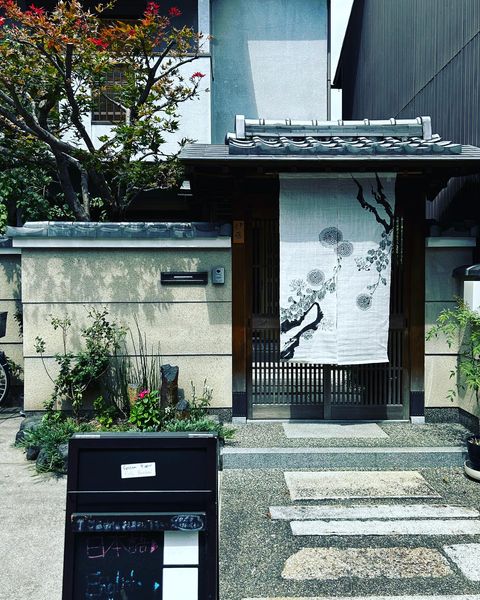伝統文化
2023.09.05

Now that it’s September, I changed the entrance curtain.
Since there is the Ch?y? no Sekku (Chrysanthemum Festival) on September 9th, it has a chrysanthemum pattern.When people used the lunar calendar, there were five days in the year called sekku. The word sekku means the special days that people held particularly important traditional events on each year. These five feasts called sekku were the seventh day of the first month, the third day of the third month, the fifth day of the fifth month, the seventh day of the seventh month, and the ninth day of the ninth month. They were called Jinjitsu, Joshi, Tango, Tanabata, and Choyo. Joshi is known as the Doll’s Festival for girls and Tango is known as the Boys’ Festival. People held traditional events and prepared special foods on each of the five feasts.
The ninth day of the ninth month was known as the Choyo Festival or the Chrysanthemum Festival. Chrysanthemums originally came from China, but chrysanthemums and cherry blossoms are both considered typical Japanese flowers. The chrysanthemums were believed to be auspicious flowers denoting longevity and eternal youth, and they were used as medicinal herbs in China. Painters in China and Japan preferred to paint the chrysanthemum, orchid, bamboo, and ume (Japanese plum) flower, which were regarded as the four noble flowers, in India ink. The chrysanthemum is also closely related to the Imperial Family. A chrysanthemum crest is used as the Imperial crest. It is an open chrysanthemum with sixteen complete radiated petals. The Imperial Court used to hold a banquet for chrysanthemum viewing on the day of the Chrysanthemum (Choyo) Festival. Today, chrysanthemum doll exhibitions and chrysanthemum flower shows take place in many places throughout Japan around September 9th.
9月になったので、玄関の暖簾を変えました。重陽の節句があるので、菊にしました??
ChrysanthemumFestival #ChoyoFestival #JapaneseTraditions #ImperialCrest #JapaneseFlowers #Sekku #CulturalCelebration #ChrysanthemumArt #AutumnFestivals #JapaneseCulture
重陽の節句 #菊の節句 #日本の伝統 #皇室の紋章 #日本の花 #節句 #文化の祝典 #菊のアート #秋の祭り #日本の文化


